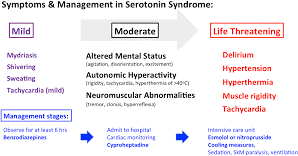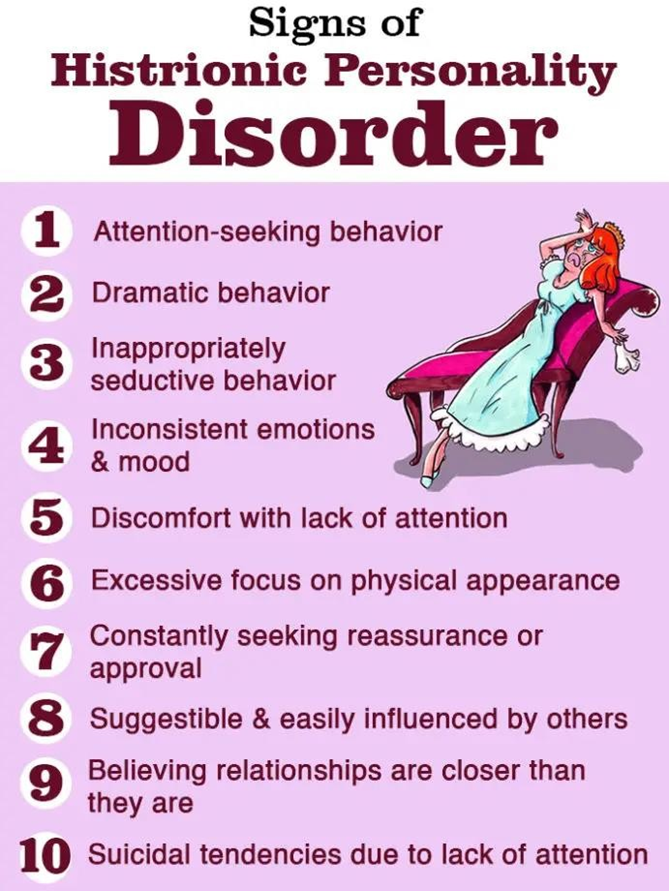A nurse is caring for a client at a clinic.
Complete the following sentence by using the lists of options. The client is at risk for developing
The Correct Answer is {"dropdown-group-1":"C","dropdown-group-2":"C"}
Rationale:
Serotonin syndrome is a serious drug reaction that results from having too much serotonin in the body. Serotonin is a chemical that plays a role in mood, sleep, appetite and other functions. Some medications, especially antidepressants, can increase serotonin levels and cause serotonin syndrome. The client is taking paroxetine, which is a type of antidepressant called a selective serotonin reuptake inhibitor (SSRI). SSRIs work by blocking the reabsorption of serotonin in the brain, making more serotonin available.
Paroxetine can cause serotonin syndrome if taken at high doses, in combination with other serotonergic drugs, or if abruptly stopped. The client’s symptoms of restlessness, abdominal pain, disorientation and fever are consistent with serotonin syndrome. Other possible symptoms include agitation, confusion, rapid heart rate, high blood pressure, dilated pupils, muscle twitching, rigidity, sweating and shivering. Severe serotonin syndrome can lead to seizures, coma and death. The client should stop taking paroxetine and seek immediate medical attention. Serotonin syndrome can be treated with supportive care and medications that reduce serotonin levels or block its effects. The client may need to switch to a different antidepressant or adjust the dosage under the guidance of their provider.

Nursing Test Bank
Naxlex Comprehensive Predictor Exams
Related Questions
Correct Answer is D
Explanation
A. Splitting behavior, where the client views people and situations as either all good or all bad, is more characteristic of borderline personality disorder rather than histrionic personality disorder.
B. Emotional lability, characterized by rapid shifts in mood, is not a primary feature of histrionic personality disorder.
C. Unexpressive affect, or a lack of emotional expression, is not a typical feature of histrionic personality disorder, which often presents with exaggerated and dramatic emotional displays.
D. Self-centered behavior, including attention-seeking and dramatic behavior to gain approval or admiration from others, is a hallmark feature of histrionic personality disorder.

Correct Answer is {"dropdown-group-1":"B","dropdown-group-2":"D"}
Explanation
- A Mantoux test: This is used to detect tuberculosis (TB) infection, especially if there's a suspicion of TB based on symptoms or exposure history.
-
A chest x-ray: This imaging test helps assess for lung conditions, including pneumonia, tuberculosis, or other pulmonary issues that might be causing the client's symptoms.
Incorrect Choices and Explanations:
-
A nasopharyngeal swab: This is used for detecting respiratory viruses, such as influenza or COVID-19, rather than evaluating TB or general lung conditions.
-
A pulmonary function test: This measures lung function and is used to diagnose conditions like asthma or chronic obstructive pulmonary disease (COPD), which might not be the immediate concern in an emergency setting without specific symptoms.
-
Blood cultures: These are used to identify bacterial infections in the bloodstream rather than evaluating TB or assessing lung conditions.
Whether you are a student looking to ace your exams or a practicing nurse seeking to enhance your expertise , our nursing education contents will empower you with the confidence and competence to make a difference in the lives of patients and become a respected leader in the healthcare field.
Visit Naxlex, invest in your future and unlock endless possibilities with our unparalleled nursing education contents today
Report Wrong Answer on the Current Question
Do you disagree with the answer? If yes, what is your expected answer? Explain.
Kindly be descriptive with the issue you are facing.
